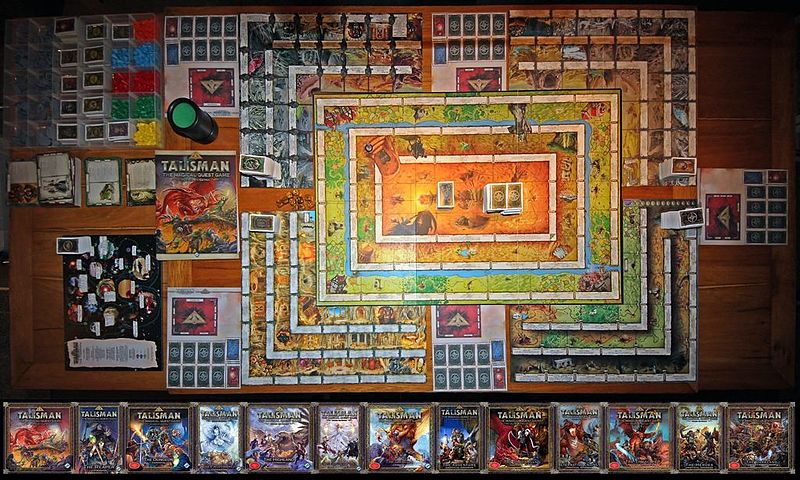Board Game Review: Talisman
Talisman is a fantasy and adventure board game made by Games Workshop in 1986. Since the game’s release, 14 expansions and three editions following the first have come to light.
The game takes place in its own, unnamed fictional realm that the players and other creatures work with and against one another to gain strength, gain magic, and gain wealth in an attempt to be lucky enough and acquire an item called a talisman.
Being the name of the game, a Talisman is a highly valued item among all who play the game, and other players will do whatever it takes to acquire one. A Talisman, by definition, is a magical object supposedly known to avert evil and bring good fortune; in the board game, a Talisman is used to enable a player to enter the center space of the board known as the Crown of Command.
So, what makes Talisman so popular? What makes people come back to the game time and time again, regardless of age?
The game is extremely well made. The amount of replayability it gives players keeps everyone interested and it is the perfect balance of luck and skill, which makes the game both constantly exciting and utterly heartbreaking at the same time.
A player’s fate will be determined by the numbers they roll and the destinations they choose to explore. This factor of chance and temptation is there to make the players decide to risk everything for fortune, or not take the chance at all and avoid their death. The creators of Talisman knew this sense of high-risk decision-making would be a staple in the game’s attraction.
Attention to detail can be seen in many ways, especially in combat, however, some can be intimidated by combat mechanics for being too difficult.
The combat is simple: a character has a base stat (strength and craft), and when a die is cast for each character or monster, the number shown on the dice will be added to that base stat. Whoever has the superior number for their stat will claim victory. Ex: Base stat of 5 + roll of 6 = 11 power for the base stat.
Like most games, there are flaws. An example of a flaw involves the factor of spells. Overall, there are 24 spells that can be used in the base game. Some cards are rare to be useful, very few are extremely useful, and nearly every card can do barely anything if anything at all. On top of this, there is a spell to counterspells, so given you use a high-level spell on an opponent, it could all be for nothing.
Another minor issue with the game is its price. Talisman is a high-quality game, however the base game along with costs around $65. But if you add every expansion to date, it costs over $400 for a complete Talisman board, card deck, and character list. This high price is hard not to be scared by as a whole, but the base game in itself is a great place to start for both comfort and financial reasons.
The developers of Talisman are not only geniuses when it comes to design, but they are also geniuses when it comes to income as well. It is hard to keep a consumer happy for nearly 35 years with the same game. The one thing that a hardcore fan of something desires is more, so they add expansions; this explains the issue of price.
Overall, Talisman is a phenomenal game and for good reason. With its simple, yet exhilarating, combat mechanics and hard to put-down charm, Talisman is easily one of the elite fantasy/adventure games of both the late 20th and early 21st century. The rules are easy to pick up, the player count is 2-6 (before expansions), and is truly for both veteran and newcomer board game lovers.
Rating: 9/10

Good morning Swedes, my name's Nick Vasbinder. I'm a part of the senior class this year at Tyrone and it's my first year being a part of Eagle Eye. I'm...







